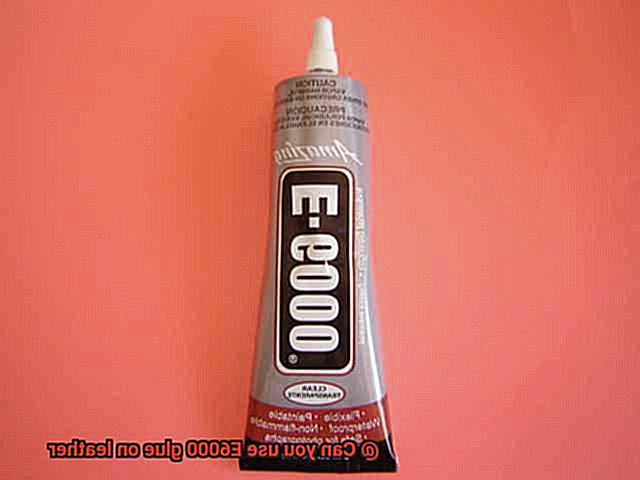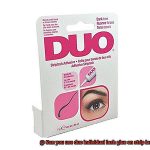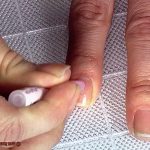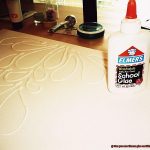It’s the cool kid of crafting materials, lending its sleekness to everything from trendy accessories to timeless upholstery. But when it comes to sticking leather together, finding the perfect adhesive can be as tricky as untangling a ball of yarn. Enter E6000 glue, the superhero of adhesives known for its Herculean strength and unwavering durability. But before you dive headfirst into your leather bonding adventure with this sticky wonder, let’s unpack its pros and cons. In this blog post, we’ll take a deep dive into the world of E6000 glue on leather, sharing insider tips and cautionary tales to help you make an informed decision.
Advantages of Using E6000 Glue:
Contents
E6000 glue is like that friend who always has your back – dependable, strong, and ready for any challenge. When it comes to bonding leather, this adhesive doesn’t mess around. Its mighty grip ensures your creations will stand up to even the toughest tests, whether it’s sturdy shoe soles or durable leather bags. Plus, it’s got some flexibility game too. That means your leather projects can move and groove without fear of cracking. And did I mention its resistance to heat, water, and chemicals? Consider your projects protected.
Disadvantages of Using E6000 Glue:
As much as we adore E6000 glue for its superpowers, there are a few things you should know before jumping into bed with this adhesive on your beloved leather goods. First off, brace yourself for a smell that could knock out an elephant. Seriously though, if you’re working in a confined space or have a sensitive nose (like moi), be prepared for an overwhelming odor experience.
Another thing to keep in mind is that patience is a virtue when it comes to E6000 glue. It takes its sweet time to fully cure, so don’t get too antsy waiting for that bond to reach its full potential. And lastly, be aware that this adhesive may cause some slight discoloration on your leather, so it’s always a good idea to do a little patch test on a hidden area first.
What is E6000 Glue?
This exceptional adhesive is a game-changer when it comes to bonding leather, offering a multitude of benefits that set it apart from the rest. In this comprehensive guide, we will delve into the wonders of E6000 Glue, exploring its unique composition, outstanding properties, and why it is the go-to choice for leather enthusiasts.

The Magic Formula: Uniting Strength and Flexibility
E6000 Glue stands in a league of its own with its unparalleled formula. Combining the strengths of epoxy and rubber cement, this adhesive offers an extraordinary blend of power and flexibility that makes it ideal for use on leather surfaces.
Unyielding Strength: Bonding Leather with Confidence
When it comes to bonding leather, strength is paramount. E6000 Glue delivers exceptional adhesion capable of withstanding high and low temperatures, ensuring that your leather projects remain intact regardless of the conditions. Whether you need to repair a worn-out belt or create a one-of-a-kind leather accessory, E6000 Glue will securely bond it for years to come.
Flexibility at Its Finest: Embrace the Natural Movement

Leather needs to retain its natural movement without compromising the bond. Thankfully, E6000 Glue dries to a flexible finish, allowing your leather goods to bend, stretch, and flex without any worries. Say goodbye to rigid glues that crack and fail over time – E6000 Glue has got you covered.
Porous No More: Penetrating the Depths
Leather’s porous nature necessitates an adhesive with superior penetration capabilities. Enter E6000 Glue. With its low viscosity, this adhesive seeps into the pores of the leather, establishing a robust and long-lasting bond. No more concerns about your precious leather items coming apart at the seams – E6000 Glue ensures a solid connection.
Moisture? No Problem: Defying Water’s Threat
Leather items are often exposed to moisture, whether it’s a sudden rain shower or everyday use. E6000 Glue boasts excellent resistance to moisture, ensuring that your leather projects remain intact even in humid or wet conditions. Bid farewell to feeble adhesives that crumble with a little rain – E6000 Glue has got your back.
Is E6000 Glue Suitable for Leather?
Leather’s unique texture and flexibility make it difficult to find a glue that can withstand its demands. Fortunately, E6000 glue may just be the superhero you’ve been searching for.
E6000 glue is a versatile adhesive renowned for its strength and flexibility. While it is commonly used for bonding various materials like fabric, metal, wood, and plastic, the question remains: Can E6000 glue handle the task of bonding leather?
The resounding answer is yes. E6000 glue possesses properties that make it well-suited for leather bonding. Its key feature is its flexibility and elasticity once it cures. This attribute makes it an ideal choice for leather, which is also known for its ability to stretch and move without breaking. With E6000 glue, you can trust that the bond created will endure the test of time.
Not only does E6000 glue provide excellent adhesion to various types of leather including genuine leather, suede, and faux leather, but it also becomes waterproof and weatherproof once fully cured. This means that your leather items can withstand exposure to moisture and outdoor conditions without compromising the bond.
However, it’s important to note that not all types of leather are suitable for use with E6000 glue. Some treated or coated leathers may have surface finishes that prevent proper adhesion. To ensure compatibility and prevent any potential damage to the leather surface, it’s always recommended to test the glue on a small and inconspicuous area before proceeding with a larger project.
Proper surface preparation is also crucial for successful bonding with E6000 glue. The leather should be clean, dry, and free from any oils or contaminants that may interfere with the adhesive’s performance. Additionally, roughening the surface slightly with sandpaper can further improve the strength of the bond.
Factors to Consider When Using E6000 on Leather
Leather, with its unruly nature and demanding requirements, has long sought a glue that can withstand its unique texture and flexibility. Enter E6000 glue, the superhero adhesive that may just be the answer to leather’s prayers. In this comprehensive guide, we will explore the key factors to consider when using E6000 on leather to create a strong and durable bond. Whether you’re a seasoned leather enthusiast or a beginner looking to delve into the world of leather crafting, this guide will provide you with valuable insights and tips to help you achieve professional results.
Type of Leather:
Not all types of leather are created equal when it comes to bonding with E6000 glue. Genuine leather, full-grain leather, and top-grain leather are generally compatible with E6000 glue. However, it is crucial to test a small, inconspicuous area first to ensure compatibility before proceeding with your project.
Surface Preparation:
Achieving a strong bond starts with proper surface preparation. Clean the leather surface using a mild leather cleaner or soap and water to remove dirt, oils, or finishes. Avoid harsh chemicals or solvents that can harm the leather. A clean and dry surface is essential for optimal adhesion.
Application Technique:
Precision and care are key when applying E6000 glue to leather. Use a small amount of glue and apply it evenly onto the leather surface using a toothpick or small brush. Avoid excessive application, as it can seep through the leather or create uneven adhesion. Work in a well-ventilated area and wear gloves to protect your hands from the adhesive.
Drying and Curing Time:
Patience is vital when working with E6000 glue on leather. It typically takes 24 to 72 hours for the glue to fully cure and achieve maximum strength. During this time, avoid stressing the glued area or exposing it to excessive moisture. Place the glued leather piece flat and undisturbed to allow for proper drying and curing.
Flexibility and Durability:
A successful bond with leather requires a glue that can withstand its natural movement and stretching without losing its adhesive properties. E6000 glue offers excellent flexibility and durability, making it ideal for bonding leather pieces subject to bending or twisting. However, always test the bond strength on a scrap piece of leather before using it on your actual project to ensure desired results.

Maintenance and Care:
Once the E6000 glue has fully cured and bonded the leather pieces together, proper maintenance and care are essential. Avoid exposing the glued area to excessive heat, direct sunlight, or harsh chemicals, as they can weaken the bond and damage the leather.
Regularly clean and condition the leather to keep it supple and prevent drying out, which can also affect the adhesive bond.
Tips for Applying E6000 Glue on Leather
E6000 glue is a versatile adhesive that can be used on various materials, including leather. However, before you embark on your leather crafting journey, there are a few crucial pointers you need to know.
Prepare the Leather Surface:
To ensure a flawless bond, it’s essential to thoroughly clean the leather with a mild soap and water solution. This will eliminate any dirt or oils that could hinder the adhesive’s sticking power. After cleaning, make sure to dry the leather surface completely.
Roughen the Surface:
Next, gently roughen the leather using fine-grit sandpaper or a nail file. This step enhances the adhesive’s grip and creates a robust bond. Remember, a light touch is all that’s needed.
Apply a Thin Layer:

Now it’s time to apply the glue. Use a small amount at a time and spread it evenly on both surfaces you want to join together. Take care not to over-apply the glue, as excess can seep through the leather and cause damage.
Let it Set:
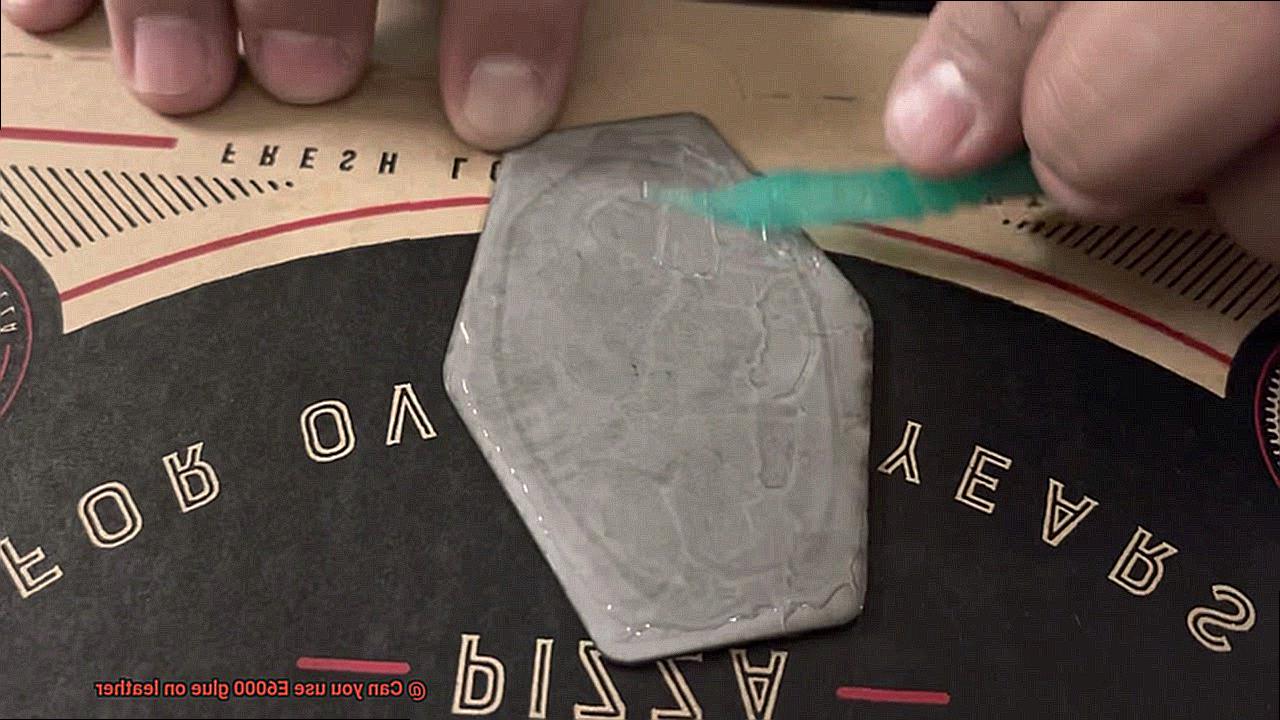
After applying the glue, allow it to set for a few minutes until it becomes tacky. This crucial step ensures a stronger bond when pressing the surfaces together.
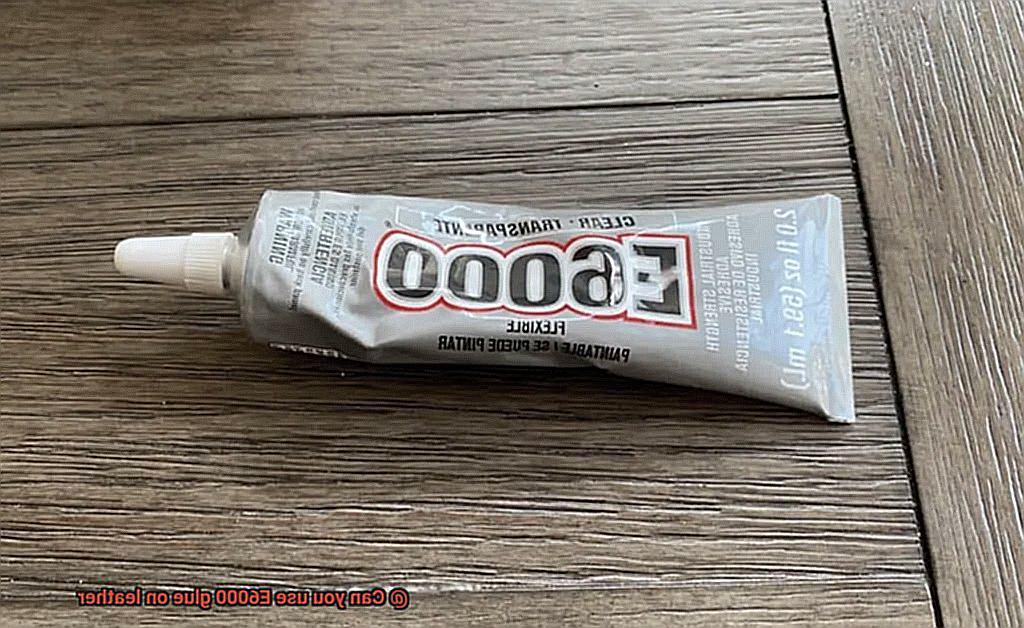
Apply Pressure Evenly:
When joining the surfaces, apply pressure evenly across the entire area. You can use clamps or weights to secure them while the glue dries. Just remember not to exert excessive pressure that may distort the leather.
Let it Dry:
After bonding everything together, exercise patience and let it dry completely before handling or using the item. Follow the instructions on the glue packaging for recommended drying times, as they can vary with temperature and humidity.
Alternatives to E6000 Glue for Leather Projects
Here, we’ll explore some alternative options that can help you bond leather for your crafting needs.
One popular alternative to E6000 glue is contact cement. This strong adhesive forms an instant bond when the two surfaces are pressed together. It’s perfect for leather projects, whether you’re repairing shoes, belts, or bags. You can choose between solvent-based and water-based formulas to suit your preferences. With contact cement, you can achieve a secure and durable bond that will withstand the test of time.
Another option to consider is leather glue specifically designed for leather projects. These specialized glues are formulated to work effectively on leather and provide excellent bonding strength. They often have a flexible and waterproof nature, making them ideal for various applications. So, if you’re working on a leather crafting project, be sure to check out these glues that are tailor-made for your needs.
If you’re in a pinch and don’t have any leather glue on hand, fabric glue can also work well on certain types of leather. Just make sure to choose a fabric glue that is compatible with the type of leather you’re using and performs well under the desired conditions. This way, you can ensure a strong and reliable bond for your leather project.
Lastly, epoxy adhesive is another alternative worth considering. Known for its exceptional bonding strength and durability, epoxy adhesive can provide a permanent bond between leather surfaces. It’s great for applications such as jewelry-making or attaching hardware to leather items.
When exploring alternatives to E6000 glue, it’s important to consider the specific requirements of your project. Some adhesives may work better for certain types of leather or specific applications. Always test the adhesive on a small, inconspicuous area of the leather before proceeding with the entire project to ensure compatibility and desired results.
The Pros and Cons of Using E6000 Glue on Leather
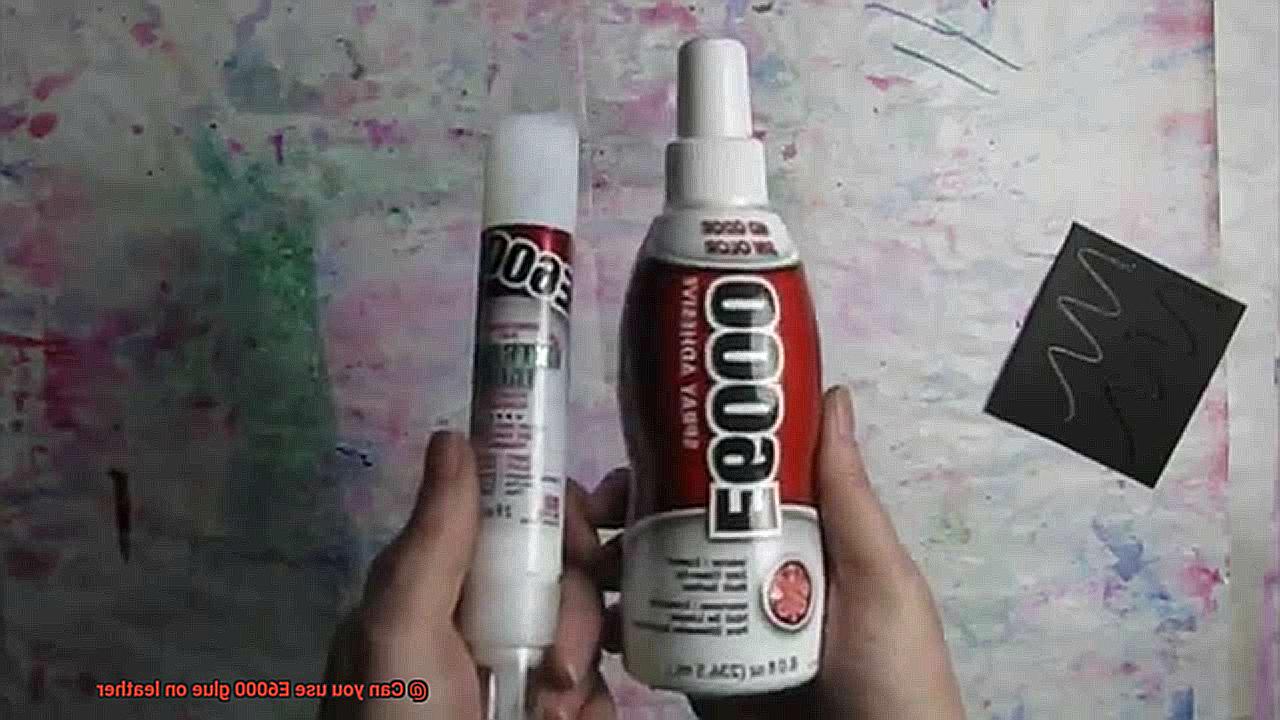
Crafting with leather often requires finding the perfect adhesive to bond pieces together, and one popular option is E6000 glue. This versatile adhesive is known for its strong bonding capabilities, making it a top choice for various crafting projects and repairs. However, before reaching for the E6000 glue, it’s important to consider the pros and cons of using it on leather.
One of the main advantages of using E6000 glue on leather is its strong bond. This adhesive is designed to provide a permanent bond that can withstand various stresses and strains. It ensures that your leather pieces will stay securely attached, giving you peace of mind that your creations will last.
Flexibility is another advantage of using E6000 glue on leather. Leather is a material that can stretch and bend, and E6000 glue is able to accommodate these movements without cracking or breaking. This makes it suitable for applications where the bonded leather needs to retain its flexibility, such as in shoes or handbags.
E6000 glue also offers resistance to water and heat. Once cured, it forms a waterproof seal that protects the bonded area from moisture and humidity. Additionally, it can withstand high temperatures without melting or losing its bonding strength. This makes it ideal for leather items that may be exposed to heat or humidity, like belts or wallets.
However, there are some drawbacks to using E6000 glue on leather. One of the cons is its strong odor. The adhesive has a distinct chemical smell that can be unpleasant, especially when working in closed or poorly ventilated spaces. If you decide to use this glue, make sure to do so in well-ventilated areas or consider wearing a mask to protect against fumes.
Another disadvantage is the drying time of E6000 glue. It typically takes around 24 to 72 hours to fully cure and reach its maximum bonding strength. This may not be ideal for projects that require immediate use or handling of the bonded leather. So, if you’re working on a time-sensitive project, you might want to consider other adhesive options.
It’s also worth noting that while E6000 glue provides a strong bond, it may not be suitable for all types of leather. Some leathers have finishes or coatings that can interfere with the adhesive’s ability to bond properly. To avoid any potential damage, it’s important to test the glue on a small, inconspicuous area of the leather first.
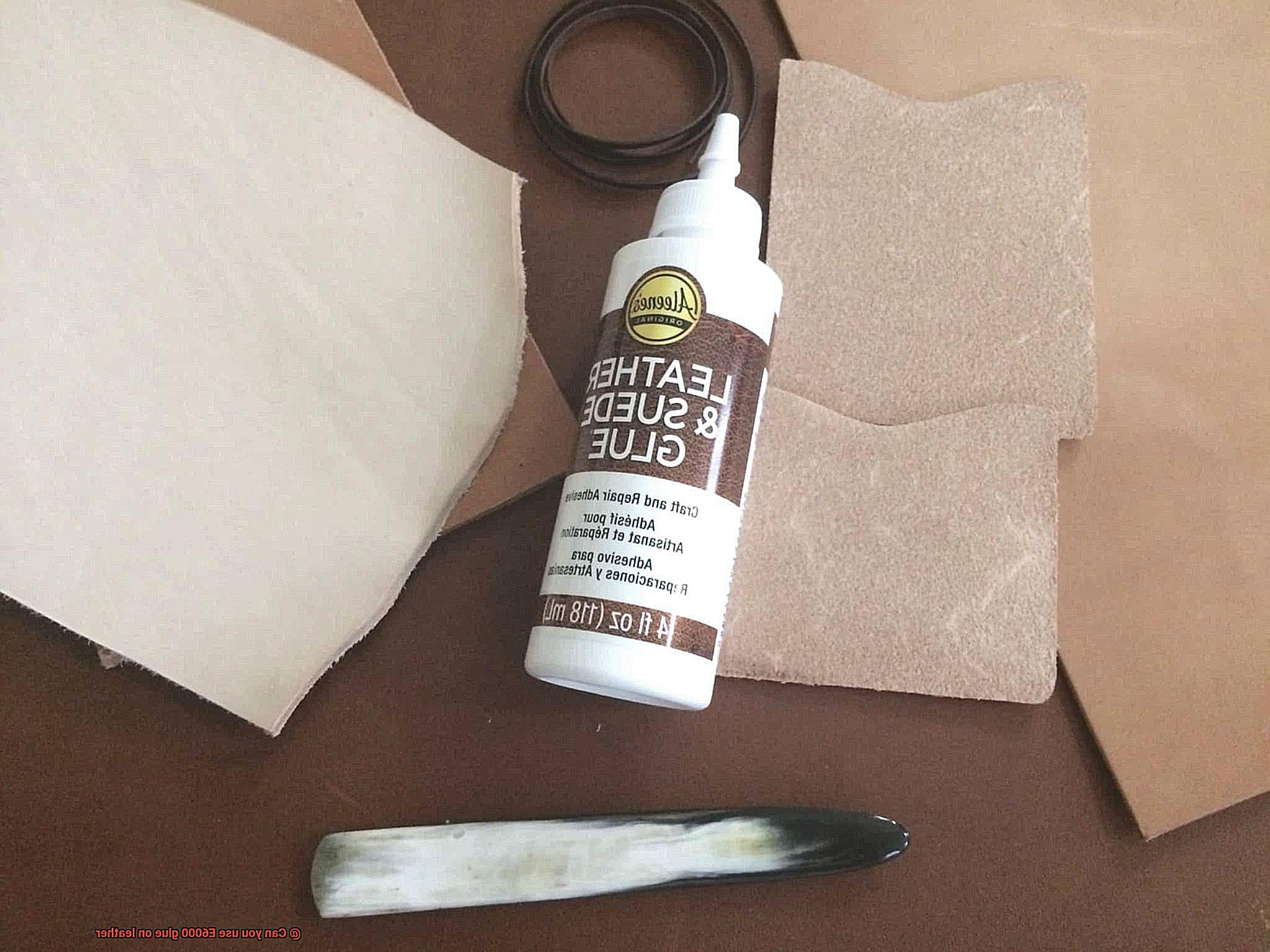
Lastly, the appearance of the bonded area may not be as aesthetically pleasing with E6000 glue compared to other adhesives specifically designed for leather. The glue can leave visible marks or residue, especially if not applied carefully. So, if the appearance of your project is important, you might want to consider using a different adhesive.
V4_EaCHcyNY” >
Conclusion
In conclusion, E6000 glue is an excellent choice for bonding leather. Its exceptional adhesion, flexibility, and resistance to heat, water, and chemicals make it a reliable and durable option for any leather project.
However, there are a few important considerations when using E6000 glue on leather. The adhesive does have a strong odor, so it’s essential to work in a well-ventilated area or don a mask for your comfort. Additionally, be aware that E6000 glue takes time to fully cure. Patience is key as you wait for the bond to reach its maximum strength. Before applying the glue, it’s also wise to do a patch test on an inconspicuous area of the leather to ensure compatibility and prevent any unsightly discoloration.
If you’re open to exploring alternatives to E6000 glue for your leather projects, consider contact cement or specialized leather glues. These options offer their own unique advantages and may be better suited for specific types of leather or applications.
Ultimately, the choice of adhesive depends on your individual needs and preferences. Whether you opt for E6000 glue or decide to venture into other options, remember that proper surface preparation and application techniques are crucial for achieving successful results.

